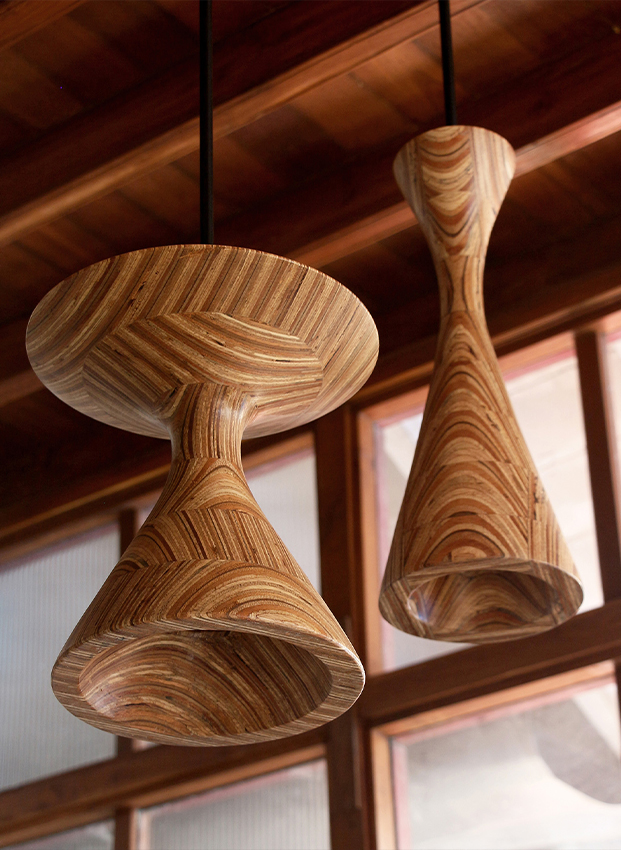Meet Kazuo Tanaka: Chief Judge At The Golden Pin Design Award 2017
- 8 Sep '17
- 4:06 pm by Crew

This year Design Pataki takes up the role of official India online partner of the Golden Pin Design Award and before the competition gets underway, we caught up with Kazuo Tanaka for an exclusive interview.
The Chinese-speaking consumer base is the largest in the world and as such have carved out a niche market with designs tailored to their needs and desires. They have a very distinct, diverse and individual culture, one that is incorporated into every aspect of their lives. In order to celebrate this diversity and honour leaders in the industry the Taiwan Design Center created the Golden Pin Award Group, which incorporates the Golden Pin Design Award and Golden Pin Concept Design Award for professional designers, and the Young Pin Design Award for Taiwanese students. Collectively, these award seeks to raise global awareness for design created for and within huaren (Chinese-speaking) communities worldwide.
International design professionals, scholars, and business leaders make up the 15-member strong collective judging team, who together will be responsible for judging the hundreds of entries and on September 27th will decide the ultimate winner at National Taiwan University Sports Center in Taipei. Heading the international panel as Jury Chair this year is the renowned businessman, Kazuo Tanaka, CEO of the innovative Japanese design consultancy, GK Design Group Inc. Founded in the 1950s, GK Design has been at the forefront of its field since its inception and after 30 years in its employ Kazuo Tanaka took his place as CEO last year.
1. How did you take the first step into the world of design?
Kazuo Tanaka: My mother was a painter of traditional Japanese pictures. When I was two years old, my father was in London as a representative of his company and sent me many miniature cars. As a result, both art and cars soon became great interests of mine. At the library of my high school, came across a book written by Kenji Ekuan, the founder of GK, and the book profoundly oriented my life.
2. Who or what has the greatest influence on your work at GK today?
KT: It’s still Kenji Ekuan. He proposed the concept of “Dougu” meaning that “there is a soul in things”. This thought can be said in another way which is “things have born spirits to seek after truth.” By apllying the thoughts of Dougu at GK, we continue to create “design that seeks the essence of things.” In this sense, I could say that I still have been under the influence of Kenji Ekuan.
On the other hand, so many kinds of world wide “social issues,” like global warming, famines, refugees, aging societies and environmental scale disasters, won’t leave my mind at all. I keep thinking what design can do for these serious issues.
3. What do you consider your personal goal in your work at GK design?
KT: I have been trying to rebuild the business style of GK Design Group. What now I see the most important matter is to deepen the base of creativity. Today’s concept of design is changing and I try to stay ahead of that curve. GK’s next challenge is designing for essential value as a creative group.
4. What would you say is the driving force of global design and what are its greatest challenges?
KT: Today, the design world is facing an widening front. It appears to be developing from the conventional meaning of design (plan, color and shape and the like) to the wider definition (to consider how objects affect life). Though the Japan translalation of the word Design is “shape” and “graphics,” the translation is a very narrow definition. On the other hand, the Chinese translation of design is “planning” which seems closer to today’s meaning.
I suspect that presently designers and societies are stuck in a confusion between these two approaches to design. Today, designers are now aiming build societies that utilise design as a resource for socio-economic aspects while combining the clear definitions of design, both narrow and wide.
5. How did you feel when you were asked to be Jury Chair of the Golden Pin Award? How do you intend to approach this position?
KT: I was honoured, Taiwan is a cherished friend of Japan. I have one memory that stands out. At the ICSID general assembly in Taipei in the year 2011 I gave a farewell speech as I ended my term as the director. I tried to express my gratitude for Taiwan’s genuine friendship, and for sympathizing with the victims of the great earthquake disaster in Japan occurred in that year. The East Japan Earthquake in 2011 also triggered the nuclear power plant accident. I couldn’t forget the strong impression that the world had shifted to an era of truth. Six years have passed since that night in Taipei and I have finally been given a chance to reciprocate that invaluable and heartfelt friendship Taiwan showed me.
I along with the rest of the esteemed panel, would like to find guidelines for tomorrow. I will be looking for those who have contemplated their design and have taken into account the value of its social significance.



























